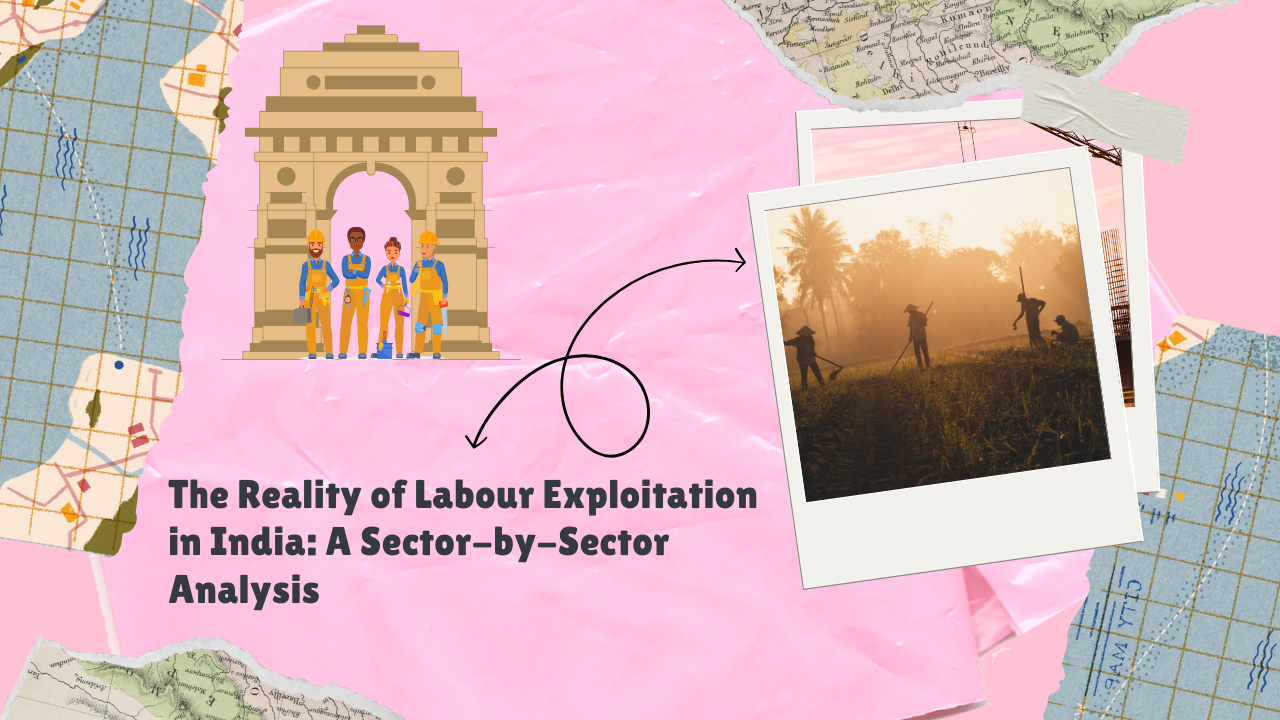The Reality of Labour Exploitation in India: A Sector-by-Sector Analysis
 Aakashi Jaiswal
Aakashi Jaiswal
India, with its vast and diverse workforce, has been grappling with the issue of labour exploitation across various sectors. While some industries offer decent wages and working conditions, others are marred by low pay, long hours, and poor treatment of workers.
India's economy is heavily reliant on its workforce, with millions of people employed across different sectors. However, the country's industrial structure often prioritizes cheap labour as a competitive advantage, leading to widespread exploitation. This approach, while beneficial for short-term profits, hinders long-term economic growth and industrial competitiveness.
The Garment Industry
The garment industry is a prime example of how over-reliance on cheap labour has stunted progress. Despite having an abundant workforce, India's share in global garment exports remains low, around 3.1%, compared to countries like China, Bangladesh, and Vietnam, which have invested in technology and modernization. Indian manufacturers continue to rely on low wages and extensive work hours, making them uncompetitive globally.
Workers in this sector often face exploitative conditions, including forced overtime, verbal abuse, and poor working conditions. For instance, women working in garment factories in South India reported being forced to work continuously, sometimes sleeping on the factory floor, and facing threats if they failed to meet production targets.
The IT and New-Generation Industries
Even in sectors like IT, where one might expect better working conditions, the reality is mixed. While some companies offer competitive salaries and benefits, others rely on extensive work hours and minimal wages to sustain profits. The reluctance to invest in workforce skill development and technological infrastructure limits the potential of these industries.
The Informal Sector
A significant portion of India's workforce operates in the informal sector, where labour laws are often circumvented. This sector includes small, unregistered firms that lack formal employer-employee relationships, leading to depressed wages and minimal technological investment. Workers in these environments face job insecurity, lower wages, and a lack of social benefits, making them vulnerable to exploitation.
Migrant and Contract Workers
Migrant workers, who leave their villages in search of employment in urban and industrial centers, are particularly vulnerable. They often belong to disadvantaged social groups, lack bargaining power, and are forced to accept extremely low wages and poor working conditions. The use of contract workers has increased significantly, with over half of new factory workers employed on a contract basis since 2011-12. These workers receive lower wages and are excluded from essential benefits like job security and health insurance.
Labour Reforms and Social Security
The Indian government has been working towards implementing labour codes to boost social security for informal workers, including gig and platform workers. By 2025, all states are expected to harmonize and publish draft rules under these codes. The aim is to provide a more inclusive and future-ready workforce by enhancing IT systems for efficient grievance resolution and introducing transformative policies.
Minimum Wage and Living Wage
India's minimum wage varies significantly across sectors and regions, with central and state governments setting different rates. There is a push towards establishing a living wage standard by 2025, which would cover essential expenditures like housing, healthcare, and education. This move is intended to uplift millions from poverty and improve living standards.
Modern Slavery and Forced Labour
India faces a significant challenge with modern slavery, with an estimated 11 million people trapped in such conditions. Forced labour is prevalent in sectors like manufacturing, agriculture, and mining, often involving debt bondage. The situation worsened during the COVID-19 pandemic, with reports of children being forced into unpaid work under threats of abuse.
Conclusion
The reality of labour in India is complex, with both exploitation and decent working conditions existing side by side. While some sectors offer fair wages and benefits, others are plagued by low pay, long hours, and poor treatment. The shift towards a more equitable and technology-driven economy is crucial for India's long-term growth. Implementing living wages, strengthening labour laws, and formalizing enterprises will be key steps in addressing worker exploitation and fostering a more inclusive workforce.
Recommendations for Change
Invest in Technology and Automation: Embracing advanced manufacturing technologies can boost productivity without extending working hours.
Prioritize Skill Development: Enhancing workforce skills through education and vocational training will create a more capable and efficient labour force.
Strengthen Labour Laws and Worker Protections: Enforcing fair wages, job security, and social benefits will improve living standards and stimulate domestic consumption.
Encourage Formalization of Enterprises: Incentivizing businesses to operate within the formal sector will promote accountability and better wages.
By adopting these strategies, India can move beyond exploitative labour practices and build a more sustainable and equitable economy for all.
Subscribe to my newsletter
Read articles from Aakashi Jaiswal directly inside your inbox. Subscribe to the newsletter, and don't miss out.
Written by

Aakashi Jaiswal
Aakashi Jaiswal
Coder | Winter of Blockchain 2024❄️ | Web-Developer | App-Developer | UI/UX | DSA | GSSoc 2024| Freelancer | Building a Startup | Helping People learn Technology | Dancer | MERN stack developer